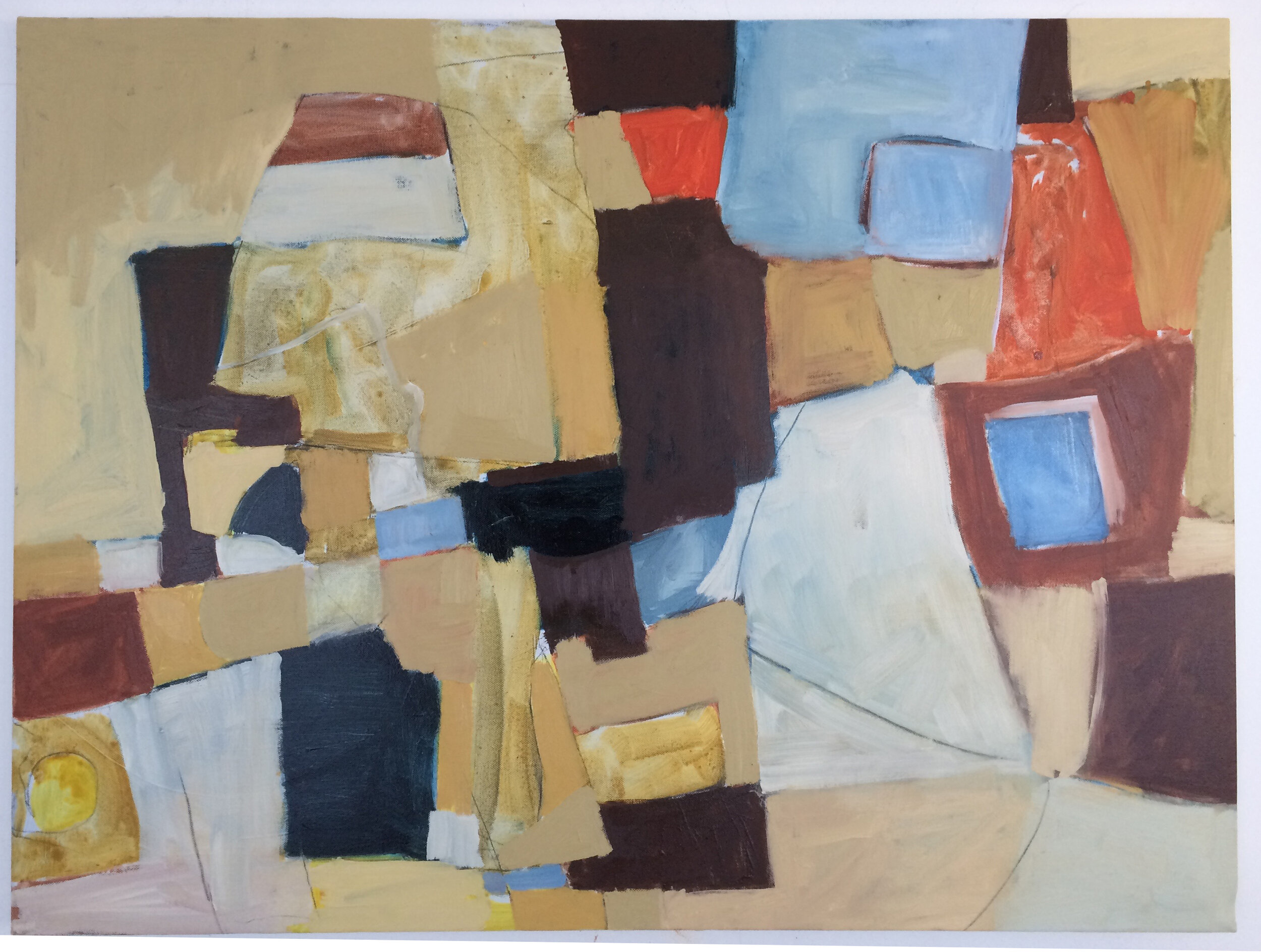From Canvas to Carpet
11 March 2021
Gideon Hatch explains the inspiration and process behind his rugs.
Antonia Cundy
Antonia Cundy is a freelance journalist for the Financial Times, the Royal Academy Magazine, and others.
Gideon Hatch, ‘Kandula’, hand knotted Turkish wool, 3.06 x 2.36m.
Image courtesy of Gideon Hatch.
In Caro Fraser’s 2013 novel, Errors of Judgement, we read of the lives and loves of a group of barristers in London. One evening, a young member of the chambers sits drinking a glass of champagne in a “vast and expensively furnished drawing room” in Knightsbridge. A sign of the room’s opulence? “Gideon Hatch rugs lay scattered on the silk-pale polished wooden floor, and on the smoke-coloured walls were hung contemporary prints and photographs,” writes Fraser.
Since 2004, Gideon Hatch has been making modern rugs using traditional techniques in India and Afghanistan. A favourite recommendation of interior designers, as Fraser’s novel suggests, Gideon’s rugs have become synonymous with a certain set of UK drawing rooms, catering to those looking for the quality of traditional techniques but the trend of contemporary, abstract design.
As a man whose career started in antique rug restoration, Gideon has always appreciated the similarities between contemporary and traditional design, rather than their differences. “I'm always in love with old oriental carpets,” he says. “They do influence me, because whenever you look at a rug, if you sort of zoom in, they’re all very abstract. The way different colours sit against each other is fantastic.”
Gideon’s first steps onto the rug world came “by accident really”, he says. Fresh out of art college in Bristol and in need of a job, he went to work for a local textile restoration workshop. “I was immersed in this amazing world of beautiful objects and I really just fell in love with the whole thing,” he recalls. After working with dealers for a few years, Gideon then set up his own dealership, and later finally gave in to a nagging “itch” to make his own products.
Gideon Hatch, ‘Sable’, hand knotted Turkish wool, 3 x 2.35m.
Image courtesy of Gideon Hatch.
His rugs are made from hand spun, unprocessed Turkish and Afghan wool. Gideon enthuses about this material, shorn from mountain goats, which he became familiar with when working with antique textiles. “It’s got much longer fibres,” he says. “It’s not the sort of wool you’d make clothes out of, but it’s really good for carpets. It’s much stronger, and it’s really oily. It’s the same wool that’s always been used to make antique rugs.”
Unlike processed wool, when this wool is dyed it still retains the natural colour of the sheeps’ fleece, so the rugs’ colours are variegated, often striated. A cottage industry of local families hand knot them on a loom, many setting up in front of the house, watching their flock at the same time. Left to dry in the sun, the natural process gives the finished rugs individual quirks. “It’s a bit like printmaking — it takes on a life of its own, there’s a separation between you and the finished product,” Gideon says. “There’s an element which you weren't expecting and usually it makes it more interesting.”
But the rugs’ design journey begins much closer to home. In fact, on the Isle of Wight, where Gideon has a house. “The designs start off with things that I see,” he explains. “I get these shapes and designs from found objects on the beach.” Rocks, driftwood, or once, a huge iron piano frame, discarded by a collapsed hotel and stripped of its keys and wood. Gideon paints these objects into abstract designs in oil and watercolour, before photographing and converting them into pixelated GIFs. These GIFs are then sent to the weavers in India and Afghanistan, who draw a life-size version of the rug onto sheets of graph paper stapled together behind the loom. The conversion is simple: one pixel translates to one knot.
Gideon Hatch, ‘Untitled #1’, oil on canvas.
Image courtesy of Gideon Hatch.
As an art student, Gideon never envisaged a career in painting. Instead, using painting as the basis for rug design was a “nice marriage between the two”. Indeed, much of his production process is a marriage of sorts — antique techniques meet designs inspired by his interest in mid century abstract art; textiles are born out of paint and paper.
But now, Gideon is finding himself increasingly drawn to the easel. “For the first ten years or so I was making paintings that I thought could turn into a rug design, but more recently I’ve just been doing paintings and seeing what might come out of it,” he says. “There are one or two rugs which are much more a reflection of the painting than they are trying to be a rug design. I think that’s going to give me more pleasure now, making rugs that are works of art, rather than fabric to decorate with.”
So will his stand at his next art fair feature paintings? “People keep telling me to exhibit them in a show next to the rugs, I probably will,” he says. “Lockdown has given me more time to actually do proper paintings and finished work on canvases, and I've got hundreds and hundreds of studies.”
But he brushes their worth aside with a self deprecating grumble. “I’m probably far too fussy, and I think they can’t possibly be good enough to sell in their own right,” he says. He might think so, but if they follow in the footsteps of his rugs, perhaps we'll soon read of a “vast and expensively furnished drawing room”, where on the "smoke-coloured walls", Gideon Hatch paintings are hung.







